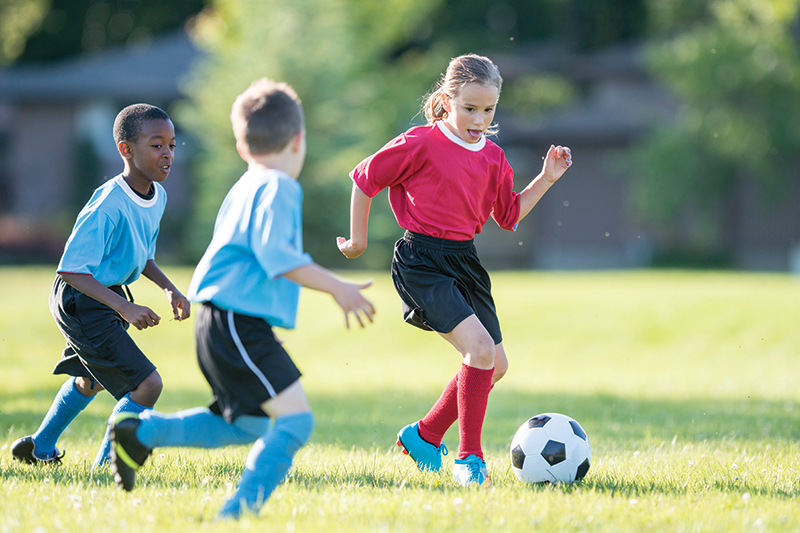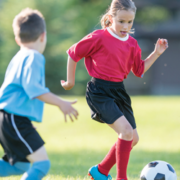Play for All: Building Inclusive Mixed-Gender Sports

A comprehensive research report titled “La mixité en sport: de la binarité par défaut à un système basé sur les besoins et le bien-être des athlètes” (“Gender mixing in sport: from default binarity to a system based on athletes’ needs and well-being”) examines mixed-gender sports participation across eight Quebec sports federations: water polo, ultimate frisbee, baseball, swimming, artistic swimming, cross-country skiing, parasports, and cheerleading. The research was conducted by Lou St-Pierre, Ph.D. (principal author), with collaboration from Anne-Marie Rouillier, Ph.D., Juliette Bernatchez, M.A., and Guylaine Demers, Ph.D., from the Laboratory for the Advancement of Women+ in Quebec Sports.
Historical Context and Methodology
The report notes that contemporary sports structures were built around a rigid binary division at the turn of the 19th century. This historical foundation has led to gender segregation being rarely questioned within the sports ecosystem, becoming a taken-for-granted norm. As the authors state, “the separation of boys and girls is rarely questioned within the sports ecosystem and imposes itself as ‘self-evident.'”
The research methodology included interviews with 44 participants across the eight sports federations, plus field observations at competitions and training sessions for ultimate, artistic swimming, boccia, running at the AlterGo challenge, and cheerleading. This allowed researchers to observe “mixity in action” and refine their analysis with in-situ observations.
Forms of Mixed-Gender Participation
The report reveals that mixed-gender participation manifests in multiple ways:
- Intra-team mixing: In ultimate frisbee, teams operate with specific gender balances (two men and two women on the field in 4v4 play).
- Intra-league mixing: All-female teams competing in male leagues, such as Quebec’s women’s all-star hockey team participating in the Quebec Pee-Wee Tournament.
- Mixed training: In swimming and cross-country skiing, athletes train together regardless of gender but compete separately.
- Mixed events: Sports like artistic swimming now include mixed duets, while the Olympics have added events like mixed team triathlon.
- Inherently mixed disciplines: Sports like korfball and quadball are designed with mixed participation from the outset.
Sport-Specific Challenges
Each federation faces unique circumstances regarding mixed participation:
- Water polo: Limited pool time often forces mixity regardless of preference. The sport is physically demanding with regular contact, raising questions about whether mixity discourages girls’ participation.
- Ultimate frisbee: The federation recently decided to implement gender segregation for under-16 athletes, but this approach doesn’t have unanimous support. Some girls prefer mixed play and question continuing in the sport under gender-segregated conditions.
- Baseball: Despite its traditionally male character, baseball has seen increased female membership, leading to the creation of female-only programs and leagues.
- Swimming: While competitions are gender-segregated, training is traditionally mixed. Some excellence clubs have experimented with complete gender division, with mixed results—some clubs returned to mixed training while others continued with segregation.
- Artistic swimming: This traditionally female sport is increasingly opening to mixity, with new events like mixed duets. However, boys often abandon competition during early adolescence due to prejudices.
- Cross-country skiing: The sport faces challenges retaining girls, particularly during the transition from high school to college and university. Fewer girls continue toward elite levels, raising questions about whether the mixed training approach contributes to this drop-off.
- Parasports: Mixed participation has a long tradition in parasports, largely due to the need for sufficient athlete numbers to develop meaningful leagues and competition. However, females with disabilities struggle for recognition, as evidenced by the Canadian women’s para-hockey team’s unsuccessful efforts to secure recognition and funding.
- Cheerleading: As more boys and men enter this traditionally feminine sport, mixed participation is becoming the norm. However, some boys abandon the practice during adolescence, though an interesting proportion return later.
Gender Socialization Effects
Gender socialization significantly impacts athletic development and behaviours:
A baseball coach observed: “What I’ve seen is that boys move past failure more quickly during a game than girls do. Everyone is equally upset with a zero-for-three performance after the game, but during play, boys seem to bounce back more easily and return to bat.”
Coaches noted they communicate differently with female athletes: “I find that girls already tend to question themselves, to not be sure they belong there. So I really take a gentler approach… saying “That was really good, what you did there.” It’s important to note that when coaches make these adjustments for girls, boys are not disadvantaged. On the contrary, many actually benefit from these adaptations.
Girls often seek social connection through sport: “For my daughter, sport is 70% social, 30% sport. But the fact that she does all this is good for her physical health, good for her mental health.”
Boys were described as more competitive but sometimes less disciplined: “Boys are so much more aggressive… there are different behavioural difficulties.” Another coach noted: “Boys have such an ego that their self-confidence is often excessively developed, which becomes a limitation. They have less introspection, but they’re not afraid.”
Challenges and Solutions
Being Sidelined in Team Sports
Female participants consistently reported being left out of play. An ultimate player shared: “The more competitive the guy is, the less he’ll pass to girls. That’s clear as day.”
Solutions implemented by coaches include:
- Regular check-ins: “I always ask the women during every match: ‘Are you touching the disc? Do you feel you were open but didn’t get the disc?'”
- Direct intervention: “When I get negative feedback, I immediately go to the guys and say, ‘This isn’t working.'”
- Team selection based on inclusive attitudes: One coach selects “boys who are less skilled but have good attitudes toward women” rather than excellent athletes with sexist prejudices.
- Mandatory gender ratios: Ultimate’s 50/50 requirement in 4v4 play ensures women’s participation.
Physical Contact Concerns
A water polo player described: “When a woman is better than them [men], it hurts their pride. We had many moments where men were very frustrated… I’ve almost been hit many times.”
Effective approaches include:
- Establishing cultural norms: “It’s a culture in our club – as soon as you join, it’s mixed.”
- Explicit discussions: Cheerleading coaches “discuss possible accidental contact to buttocks, genitals, and breasts that might occur” and “regularly remind everyone about boundaries and the importance of consent.”
- Consequences for inappropriate behaviour: Athletes who don’t improve technique after guidance face potential exclusion.
Homophobia in Traditionally Female Sports
Male participants in traditionally female sports face homophobic comments. A cheerleading coach observed: “Football guys can really make [homophobic] comments about those who do cheer.”
Sports are addressing this through:
- Rule changes: Artistic swimming has modified scoring systems to “highlight athletic prowess while placing less emphasis on aesthetic aspects.”
- Embracing diversity: A club director emphasized: “promoting body diversity, just like gender diversity… opening up to all possible diversity.”
- Gender-neutral approaches: “For choreography, I made efforts to choose music that was more gender-neutral… And for swimsuit designs, I tried to choose patterns with exposed shoulders so that in the water, everyone looked similar.”
Success Factors
Two critical factors determined successful mixed-gender experiences:
1. Coaches Who Combat Gender Stereotypes
Effective coaches take individualized approaches:
- “Listen to your athletes much more, and adapt based on each individual.”
- “I always meet with people individually… I highlight everyone’s strengths on a chart and encourage them to find strengths in others where they themselves have weaknesses.”
- Using inclusive language: Avoiding terms like “boys” or “guys” when addressing mixed teams.
2. Meaningful Competition Based on Skill Level
Creating appropriate competitive environments based on skill rather than gender leads to better experiences:
- In boccia, divisions are based on athletes’ motor skills, not gender.
- Swimming and cross-country skiing coaches create “moments where the girls are together and the boys are together” while maintaining mostly mixed training.Swimming coaches create “moments where the girls are together and the boys are together” while maintaining mostly mixed training.
- Some clubs structure groups based on approach to sport (technical vs. playful) rather than gender.
The Importance of Choice
The report strongly emphasizes giving women and girls options in their sporting environment:
“We also note another essential element, which is the importance of giving girls and women the choice to evolve in mixity or in non-mixity in their daily practice. There are girls and women who prefer to be in non-mixity, others who prefer mixity, and some who like to have the opportunity to do both. Forcing girls and women to evolve in non-mixity, as is often the case, risks making some dropouts.”
For this choice to be meaningful, the opportunities must be equivalent in both settings:
“For this to be a real choice, opportunities must be equivalent in mixity and non-mixity, meaning equivalent training hours, similar schedules, accessibility to good coaching staff, and meaningful competitions.”
The authors acknowledge that providing such equal opportunities isn’t always possible due to participant numbers, personnel, or infrastructure limitations, but present it as “an ideal to strive toward and implement when conditions allow.”
Mixed vs. Non-Mixed Experiences
The report notes differences between mixed and non-mixed environments, particularly for newcomers:
“We observe that the degree of familiarity with the sport is particularly important in a context of mixity, whereas in female teams and clubs there is a greater openness of veterans toward novices. We observe this not only in traditionally female sports such as cheerleading and artistic swimming, but in all disciplines. The reception is better for novice girls and women in female groups than in mixed groups.”
This finding raises questions about how boys and men who are new to a sport are welcomed in male-only groups.
Benefits of Mixed-Gender Sports
A water polo player emphasized: “In water polo, there’s really an advantage to having mixed gender. The boys will be more focused on physical performance, violence, aggressiveness. Raw strength. Girls are really more tactical.”
A parasport athlete shared: “Playing mixed allows you to develop different abilities… playing basketball against a guy who’s going to be more rough… I’ll learn to position myself properly to receive the impact.”
An ultimate coach noted: “When girls play with boys, it builds their confidence… And conversely, for boys, playing in mixed groups with girls brings them a certain calmness, it settles their ego.”
Recommendations
The report concludes with eight evidence-based recommendations:
- Mandatory coach training on gender socialization and counteracting stereotypes
- Open discussions about physical contact and consent
- Combat homophobia explicitly
- Deconstruct the notion of “boys’ sports” and “girls’ sports”
- Offer meaningful competition matched to skill level
- Provide choices between mixed and single-gender participation
- Create both mixed and single-gender moments within programs
- Base group divisions on development needs rather than defaulting to gender
Future Research Directions
The authors suggest exploring recreational adult sports where mixity is common but without official frameworks, investigating sports like ringette and softball that developed as reactions to women’s exclusion from hockey and baseball, and further studying individual sports, as fewer participants from these disciplines were included in the current research.
The research ultimately suggests moving beyond binary gender divisions toward systems that prioritize athlete development, well-being, and meaningful competitive experiences. As one participant summarized regarding mixed-sport choices: “When asked about their ideal athlete development model, responses within the same discipline varied. For some, mixity until age 14 should be the norm, while for others, non-mixity should prevail until that age before moving to mixity in late adolescence.”

